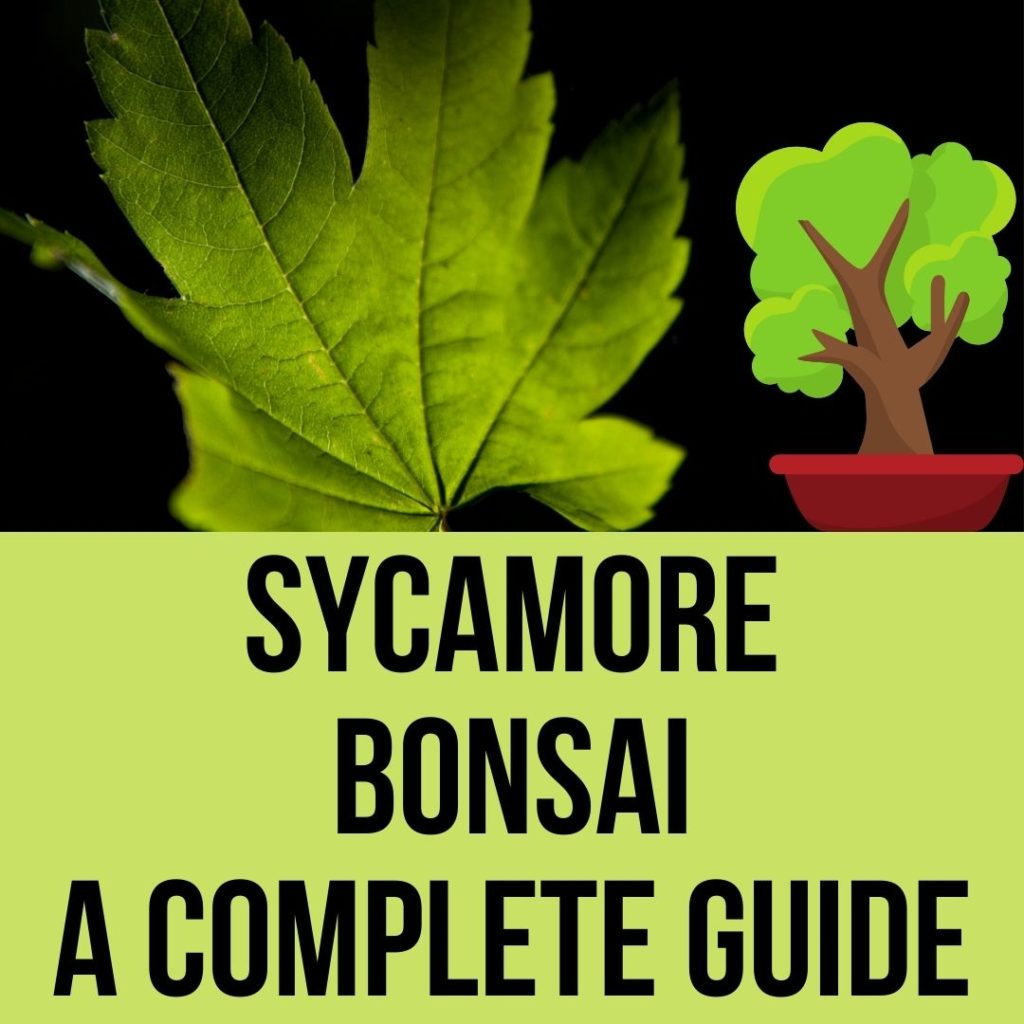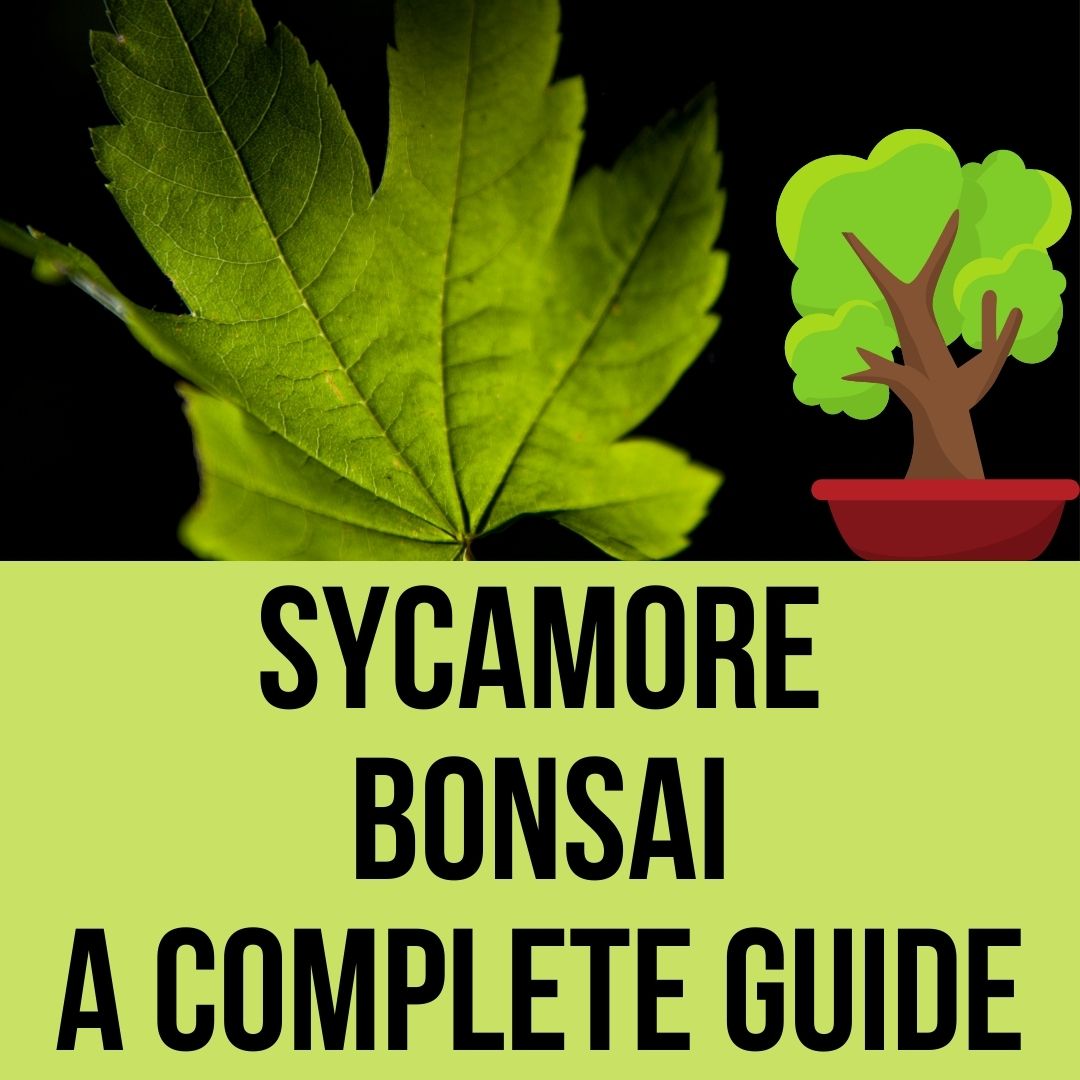Bonsai is the art of creating miniature scale trees that are found in nature. The art is hundreds of years old and originally originated in China.
Later it was improved and refined by the Japanese. They also helped spread the techniques and methods of bonsai. At present bonsai is a known concept to the majority and has millions of practitioners around the globe.
We will tell you exactly how to grow Sycamore Bonsai with step-by-step guidance so that you can follow them easily.
Sycamore
Not all trees are fit to be a bonsai. The sycamore on paper is such a tree, it is a big tree in nature. The tree’s growth can reach up to 66 to 115 ft. The tree also has big, deciduous leaves. They grow quite fast in optimal conditions and can be considered an aggressive grower. These features make them a bad match for bonsai. However, there are examples of successful sycamore bonsai but they are rare.
The trees are known as sycamore in England and they are called sycamore maple in America. They are considered common trees in Central Europe and Eastern Asia. The trees can thrive in coastal areas because of their deep and aggressive roots. They can survive in storms, hard winters easily. Sycamores can be considered tough trees in nature.

Procedures To Grow Sycamore Bonsai
The first step to creating a sycamore bonsai is to procure a sapling. You can also grow one but it is better to collect one from a nursery or you can find one yourself. They are very common if you live in Europe or in Eastern Asia. The sapling should be healthy and have a good growth rate.
Soil
Plant the sapling in a small pot. Also, remember this is not the final pot for your bonsai. The pot should be filled with fertile soil with sufficient nutrients. It should be moist and a little acidic soil. The soil should have moisture but not marsh. The ideal environment for a bonsai should imitate the natural soil the tree grows in.
Watering
The tree will need a decent amount of water because the pot is small and the tree is young. Although too much water will rot its root and create other complications. It is best to be careful when watering. A quick check should let you know if your plant needs water. The soil should be damp so if it is too dry, then water your plant.
However, sometimes the topsoil is dry but the pot has enough water in it. So try lifting the pot to check the weight, to ensure if it needs water. It is best to water early in the morning or in the late afternoon. That way your tree will have enough moisture all day long. Also, avoid watering the plant in full sun.
Positioning
The sycamore trees are hardy trees in nature. They need lots of sunlight and are trees that can survive in tough weather conditions. So position your bonsai outside. It can thrive in the rainy season and winter easily. However, it has trouble with harsh summer. In summer, morning sun and afternoon shed is best for its growth. The trees can also survive in coastal areas without any hitch. Therefore do not be worried about placing them outside.
Cutting And Trimming
The trimming process needs to be through for sycamore bonsai. The tree’s growth rate is aggressive and will grow bigger than a bonsai without extensive care. The new shoots should be pinched regularly, it can be done by fingers or a hand trimmer. Trim the branches that you do not want but keep enough to sustain the tree.
Sycamore leaves are big for a bonsai and pinching the new shoots should tame the plant but you have to do it regularly. After fall, when the leaves fall out there should be new buds growing out. Trim the first set of buds, it will not harm the sycamore. The trimming of new buds is a good way to ensure the leaves grow small.
You also need to make some big cuts for the branches. The branches that grow upwards even if they are thick should be cut. This ensures the tree does not grow in height and maintaining the height is necessary for a bonsai.
Repotting
Repotting is an important process for bonsai. For sycamores, it is essential because their roots grow and take over the whole pot in a very short time. The trees in nature grow freely and in broad spaces. As a new plant, the repotting should be done every year but for older plants, 2 to 3 years is the recommended time.
While repotting, cut the roots that are 1 to 1 ½ inches thick. These thick roots will keep growing if kept intact and will be a hindrance in the future for repotting. The fine, thin roots are enough for your tree to survive. As the tree gets older and is tamed, move it to a wider pot. The pot should complement the size of the tree, it should not make the tree look suffocating.
Training And Wiring
Wiring is a good way to train your sycamore. You can start early to make sure the training is effective. However, be careful not to harm the branches or the tree. Sometimes if the wire is kept long enough it harms the branches so remove the wires after a few months. It is best to cut the wires instead of removing them by hand.
Pests And Diseases
Sycamores are prone to some pests and diseases. The sycamore Lace Bug, sycamore anthracnose, and powdery mildew are some of the common ones. If the tree is kept under constant observation you can treat them before it gets critical.
In spring spray copper salts, cupric hydroxide, and thiophanate methyl to make sure your tree does not get attacked by pests and bugs. Also using organic pesticides from time to time will ensure your tree grows healthy.
Conclusion
The sycamore bonsai is a tough project to pursue. It will need constant care and observation to ensure it grows into a good bonsai. The sycamore bonsai is not particularly a favorite for bonsai collectors because of the tough upbringing it requires.
However, if they are taken care of by determined hands, the tree can grow into a majestic bonsai. So, it is a suitable project if you are focused and passionate.
